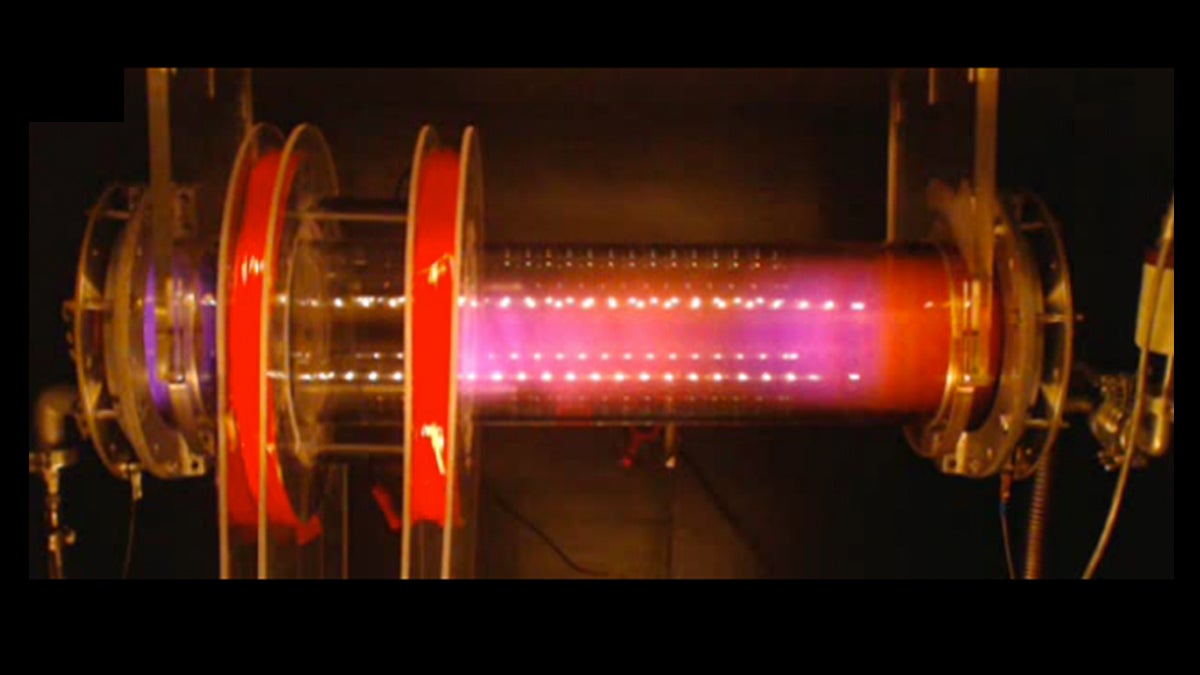Plasma you can control, real-time, from your computer

The Remote Glow Discharge Experiment offers students the ability to experiment with plasma through a live webcam feed of a glass tube filled with air, pictured here (Electronic image via Remote Glow Discharge Experiment)
The Princeton Plasma Physics Lab allows students to experiment on plasma remotely, in real time, right from their computers, with the Remote Glow Discharge Experiment.
Most students returning to school this fall don’t have a vacuum chamber in their classrooms, or strong power supplies needed to make plasma, ionized gas that makes up stars, the sun, and the material inside neon lights.
Now, the Princeton Plasma Physics Lab is giving them the next best thing: students can experiment on plasma remotely, in real time, right from their computers, with the Remote Glow Discharge Experiment.
“This all came about from this idea of the best way to learn science is to do science, but as the populaity of online courses has taken off, there is this question of how do you do science courses (online)?” said Andrew Zwicker, head of science education at the Princeton Plasma Physics Laboratory.
“How can we bring plasmas to people who don’t normally have it?,” Zwicker said.
The Plasma Lab’s solution: the Remote Glow Discharge Experiment, a live webcam feed of a glass tube filled with air.
Plasma is created when a gas is heated enough to rip electrons away from atoms, creating ions.
On the site users can make that happen by controlling the voltage, pressure and electromagnetic field inside the glass tube.
By manipulating the three slider controls, site visitors can make what looks like a mini Northern Lights: pulsating violet and then red plasma appears inside the glass tube, moving at times in glowing bands.
Zwicker said the project’s contribution to science education goes beyond the plasma experiment.
“What we really did is we developed software that can control almost any type of piece of equipment in a teaching laboratory,” Zwicker said.
The lab plans to share the software with other educational groups for their own use.
Classroom use of the tool, developed by postdoctoral student Arturo Dominguez, was slow this spring, but 4,6000 individual users have logged on since its March launch.
Somerset County, NJ, physics teacher Sophia Gershman used the site during a science summer camp to teach concepts of electromagnetism and particle behavior. She said the site alone didn’t hold her students’ attention for long, but it was a good teaching tool when integrated into a larger lesson plan.
“It’s actually quite a sophisticated experiment and it’s very useful as a teaching tool, to actually have access to sophisticated experiments, because it actually shows how real world experiments or real-world phenomena work, ” Gershman said.
WHYY is your source for fact-based, in-depth journalism and information. As a nonprofit organization, we rely on financial support from readers like you. Please give today.

